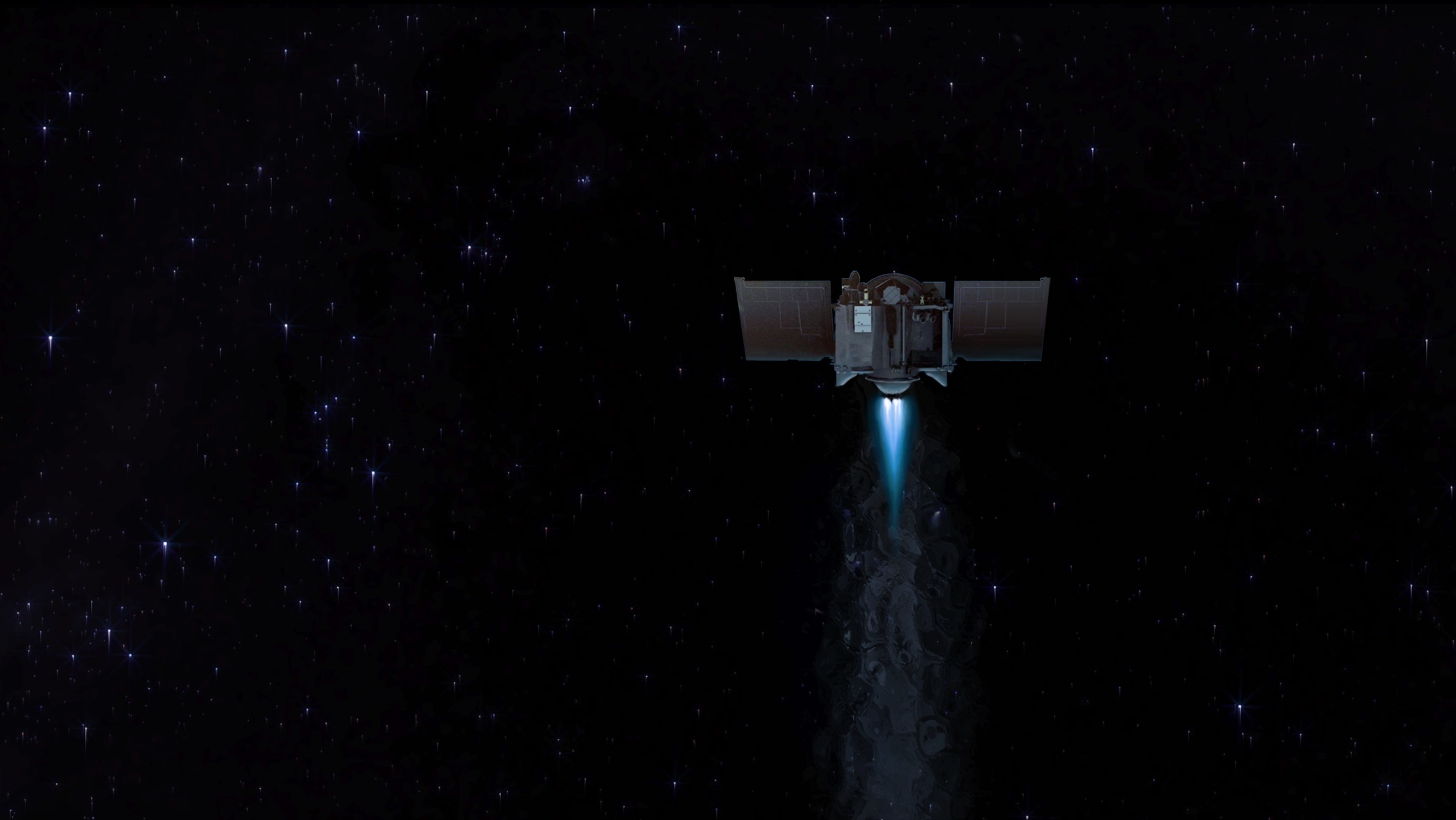Destination, Asteroid: NASA's OSIRIS-REx Spacecraft Starts Final Approach
Even as a European lander performed an epic touchdown on an asteroid this week, NASA started its final maneuvers on Monday (Oct. 1) to send its own spacecraft to a space rock.
NASA's OSIRIS-REx (Origins, Spectral Interpretation, Resource Identification, Security-Regolith Explorer) mission executed the first asteroid approach maneuver that day, putting the spacecraft on track for its arrival at asteroid Bennu in December, NASA said in a statement. However, it will take at least until next week to find out if the maneuver was successful, NASA said.
OSIRIS-REx performed a braking maneuver using its main engine thrusters. The procedure was designed to slow down the spacecraft to 313 mph (140 meters/second), roughly a third of the craft's previous speed of 1,100 mph (491 m/s).

The engine burn marks the beginning of a busy six weeks for the spacecraft as it completes a series of orbital tweaks that will ensure it reaches its destination.
The last of those maneuvers, scheduled for Nov. 12, will put OSIRIS-REx on track to arrive at Bennu on Dec. 3, at a distance of 12 miles (20 kilometers) from the asteroid's surface. OSIRIS-REx will then do several flybys over Bennu's poles and equator. The mission's ultimate goal is to pick up a sample of the asteroid to return to Earth in 2023.
Meanwhile, the Hayabusa2 sample-return spacecraft successfully dropped the MASCOT (Mobile Asteroid Surface Scout) lander, a joint project of the German and French space agencies, onto the surface of asteroid Ryugu on Oct. 2. There, the lander completed a 17-hour work session. Hayabusa2 will do multiple scoops of the surface itself before returning to Earth with the precious material in 2020.
Scientists are interested in discovering more about the origins of asteroids in order to learn about the solar system's history. These space rocks represent what the solar system used to look like, before moons and planets formed from rocks and gas that coalesced due to gravitational forces.
Get the Space.com Newsletter
Breaking space news, the latest updates on rocket launches, skywatching events and more!
There's a second, less benign reason to be interested in asteroids: Some of these space rocks, including both Ryugu and Bennu, occasionally cross the orbit of Earth. And scientists would like to be able to better assess how to protect the planet against an unlikely but possible asteroid impact. NASA tracks many thousands of asteroidsthrough its Near-Earth Object program; no imminent threat to Earth has been found yet.
Follow us @Spacedotcom, Facebook and Google+. Original article on Space.com.
Join our Space Forums to keep talking space on the latest missions, night sky and more! And if you have a news tip, correction or comment, let us know at: community@space.com.

Elizabeth Howell (she/her), Ph.D., was a staff writer in the spaceflight channel between 2022 and 2024 specializing in Canadian space news. She was contributing writer for Space.com for 10 years from 2012 to 2024. Elizabeth's reporting includes multiple exclusives with the White House, leading world coverage about a lost-and-found space tomato on the International Space Station, witnessing five human spaceflight launches on two continents, flying parabolic, working inside a spacesuit, and participating in a simulated Mars mission. Her latest book, "Why Am I Taller?" (ECW Press, 2022) is co-written with astronaut Dave Williams.









